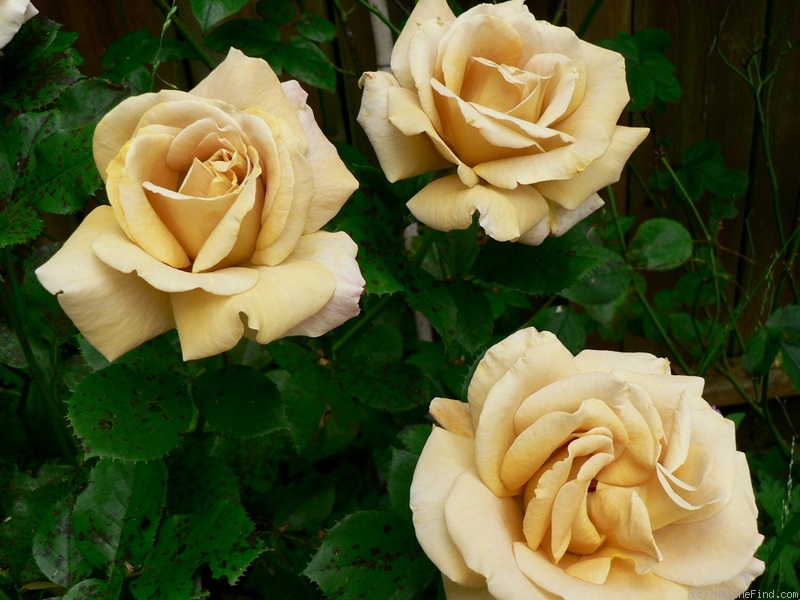|
|
'Honey Dijon ™' rose Description

Photo courtesy of Jeffrey
HMF Ratings:
96 favorite votes.
Average rating:
EXCELLENT-.
ARS:
Russet Grandiflora. Registration name: WEKsproulsesExhibition name: Honey Dijon ™
Bloom:
Tan, ages to lighter . Mild to strong, fruity fragrance. 24 to 39 petals. Average diameter 4.75". Very large, full (26-40 petals), in small clusters, formal bloom form. Blooms in flushes throughout the season. Pointed, ovoid buds.
Habit:
Medium, bushy, mounded, spreading, upright. Medium, semi-glossy, medium green foliage. 3 to 7 leaflets.
Height: 39" to 4'11" (100 to 150cm).
Growing:
USDA zone 6b through 9b (default). Can be used for garden, hedge or shrub. Very vigorous. Protect tender new spring growth from hard freezes that may cause canker, die-back and death of the plant. . Remove spent blooms to encourage re-bloom. Spring Pruning: Remove old canes and dead or diseased wood and cut back canes that cross. In warmer climates, cut back the remaining canes by about one-third. In colder areas, you'll probably find you'll have to prune a little more than that. Remove old canes and dead or diseased wood..
Breeder's notes:
Lasting novel color, good vigor, classic form.
Patents:
Australia - Patent No: AU3679P on 18 Dec 2008 Application No: 2007/081 on 9 Mar 2007 VIEW PBR PATENT‘WEKblusi’ x ‘MACivy’. ... Breeder: Tom Carruth, Weeks Wholesale Rose Grower, Inc.,
Upland, CA, USA. ...First sold in USA in Dec 2004. First Australian sale Jun 2006. France - Application on 2006 United Kingdom - Application on 2006 United States - Patent No: PP 17,822 on 19 Jun 2007 VIEW USPTO PATENTApplication No: 11/285,955 on 23 Nov 2005 Inventors: Sproul; James A. (Bakersfield, CA)
This invention relates to a new and distinct variety of Grandiflora Rose. It has as its seed parent the variety known as `WEKblusi` (U.S. Plant Pat. No. 10,188) and as its pollen parent the variety known as `MACivy` (U.S. Plant Pat. No. 8,362).... description is of 3 to 4 year-old rose plants of the new variety grown outdoors in Upland, Calif. in the month of November.
|